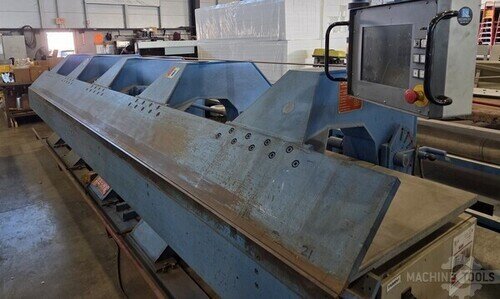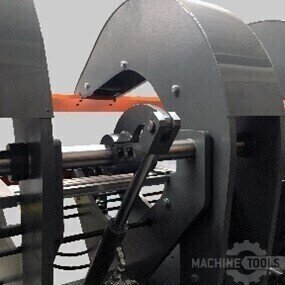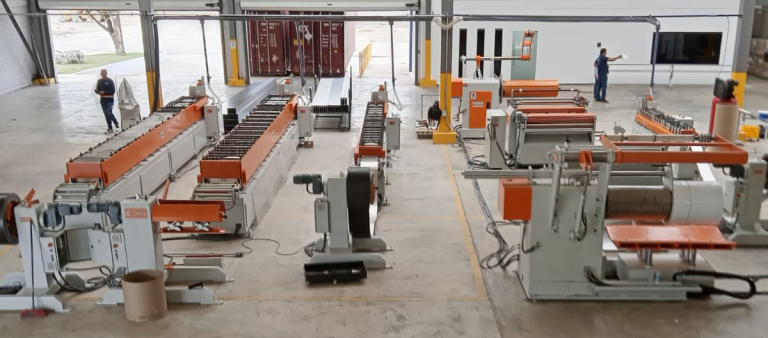From the desk of Patrick O’Neill, Regional Sales Executive at Mac-Tech, I’ve had the privilege of guiding fabrication shops toward modernization. Whether you’re involved in roofing lines or architectural fabrication, understanding how compact hybrid press brakes can elevate your operations is crucial. My journey from southern Chicago to Mac-Tech has been all about bringing efficient, innovative solutions to space-limited shops.
Understanding the Need for Compact Hybrid Press Brakes
In today’s fast-paced fabrication environment, space is often at a premium. Compact hybrid press brakes, like those from Rytech, are designed to maximize efficiency in limited spaces. These machines combine the precision of hydraulic systems with the energy efficiency of servo-driven technology. On shop floors, I’ve witnessed how these space-saving designs allow for more equipment within the same footprint, enhancing overall productivity without compromising quality.
Enhancing Efficiency in Coil-Fed Production
Coil-fed production lines benefit significantly from compact hybrid press brakes. By integrating these machines, shops can streamline processes, reduce material waste, and improve throughput. I’ve seen firsthand how the right press brake can transform coil-fed operations, allowing for seamless transitions between different production stages and reducing downtime.
Key Considerations for Evaluating Machine Upgrades
When considering machine upgrades, it’s essential to evaluate the current and future needs of your shop. Look at factors like production volume, material types, and available space. Machines like the Akyapak and Mac Shear offer advanced features that can lead to substantial ROI through reduced labor costs and increased precision. Consider how these upgrades align with your long-term goals and the potential for automation.
Streamlining Processes: Slitting, Forming, and Folding
Efficiently managing slitting, forming, and folding processes is crucial for productivity. Compact hybrid press brakes provide the flexibility needed to handle these tasks with ease. I’ve seen installations where integrating these machines significantly reduced cycle times and improved product consistency. The ability to quickly adapt to different tasks without extensive reconfiguration is a game-changer for many shops.
1990 Accurpress 7606
- Capacity: 60 T x 72″
- Weight: 6,000 lbs.
- Dimensions: 84″L x 40″W x 70″ H
- Ram stroke: 8″
1992 Accurpress 750024
Integrating Automation for Precision and Workflow Optimization
Automation is not just a buzzword; it’s a necessity for modern fabrication. By integrating automation with compact hybrid press brakes, shops can achieve unparalleled precision and workflow optimization. Systems from brands like Erbend and Stefa demonstrate how automation reduces human error and enhances repeatability. This integration also allows operators to focus on more complex tasks, improving overall job satisfaction and efficiency.
Real-World Success: Case Studies in Metal Fabrication Efficiency
In one installation, a customer replaced outdated hydraulic systems with Rytech hybrid press brakes. The result was a 30% increase in production speed and a significant reduction in energy consumption. Another shop saw labor costs drop by 20% after upgrading to automated systems, allowing them to redirect resources to strategic growth areas. These real-world examples underscore the tangible benefits of investing in modern equipment.
FAQ Section
When is the right time to upgrade a roll former or folder?
Consider upgrading when maintenance costs start to outweigh the benefits of your current equipment, or when you need to increase production capacity.
How do servo-driven folders compare to hydraulic systems?
Servo-driven folders offer greater energy efficiency and precision, making them ideal for high-volume production environments.
What’s the difference between a combi-beam and double folder?
A combi-beam is versatile, allowing for multiple operations, while a double folder is specialized for increased speed in specific tasks.
What are signs a roll forming line is no longer cost-effective?
Frequent breakdowns, rising maintenance costs, and inability to meet production demands are clear indicators.
How can coil automation reduce operator requirements?
Automation streamlines processes and reduces manual intervention, allowing operators to oversee multiple machines simultaneously.
What kind of maintenance schedule do panel benders need?
Regular preventative maintenance, including lubrication and calibration checks, is essential to maintain performance.
Can older shears be upgraded with safety and accuracy features?
Yes, many older shears can be retrofitted with modern safety guards and precision enhancements.
As we navigate the future of fabrication, I encourage you to reach out for a walkthrough, demo, or quote. At Mac-Tech, our focus is on building trust and ensuring your long-term success. With years of experience, I’m here to help you make informed decisions that will transform your operations. Feel free to contact me directly at pat@mac-tech.com or 414-232-7929. Let’s work together to elevate your fabrication capabilities.
Get Weekly Mac-Tech News & Updates








